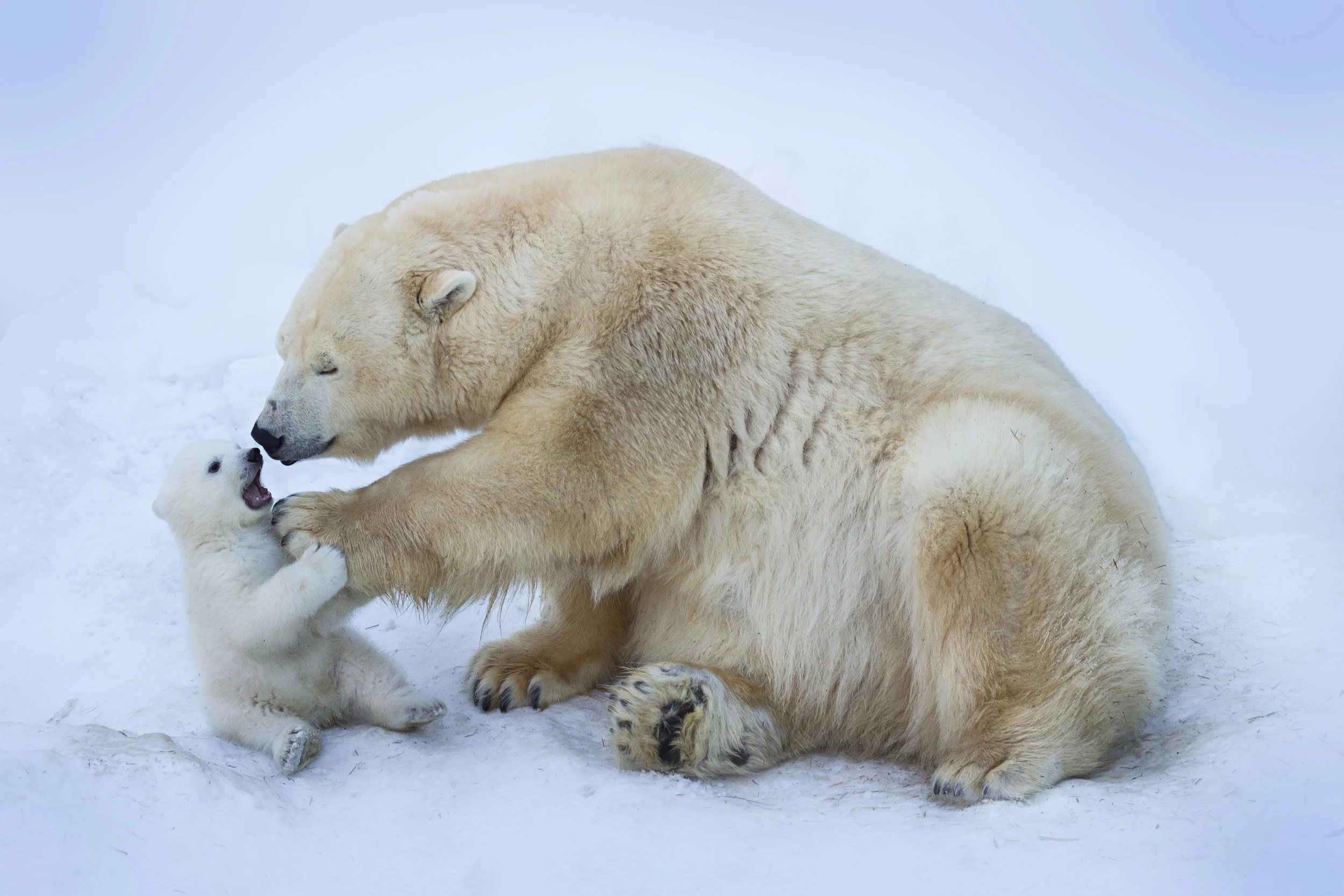Polar Bear
"Swimming Lesson" by Chihiro Howe (Copic markers)
“Polar bears were always one of my favorite animals, ever since my grandmother gave me a stuffed polar bear toy when I was three. I never parted with that bear, and it’s still sitting on the bed. I wanted my series of drawings to show the caring side of the animals, so I’ve drawn the animals with a parent and the cubs.”
Your purchase is helping Expedition Art and Saving Species purchase land in Sumatra! Learn more about the project.
Habitat
Polar bears are marine mammals, and spend much of their time on Arctic sea ice.
Family life
They are generally solitary as adults, except during breeding and cub rearing. They seek out maternity dens in October or November. Sows give birth to usually 1 or 2 one-pound cubs and then nurse them until they reach about 20-30 pounds before emerging from the den in March or April. The young are born from November through January while the mothers are hibernating. Cubs will remain with their mothers for a little over 2 years. Polar bears are also strong swimmers, and individuals have been seen in open Arctic waters as far as 200 miles from land, although swimming long distances is not preferred because of the risk it could involve.
Lifespan
In the wild, polar bears can live from 15 to 18 years. They can live up to 30 years in captivity.
Hunting Habits/Diet
Polar bears spend over 50% of their time hunting for food, but less than 2% of their hunts are successful. They primarily feed on ringed seals and bearded seals. They are also known to eat walrus, beluga whale and bowhead whale carcasses, and birds’ eggs. Polar bears travel great distances in search of prey.
Population
There are between 20,000-25,000 polar bears in the world.
Fun Fact
The polar bear is the largest and most carnivorous member of the bear family.
Why are They Endangered
Polar bears are endangered because of ongoing and potential loss of their sea ice habitat resulting from climate change. They rely on sea ice to hunt and store energy for the summer and autumn, when food can be scarce. But now the sea ice is melting earlier and the bears have to spend longer periods without food, causing their health to decline.
Status
Vulnerable


